Ultimate Guide to Exercises for Lumbar Herniated Disc Relief 2
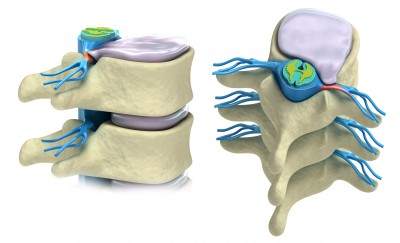
Did you find our previous article, “Disc Herniation Part 1,” helpful but are still battling discomfort? Are you eager to discover exercises that can effectively reposition your herniated disc and enhance your well-being? You’re in the right place.
In this comprehensive guide, we’ll cover:
- Effective Exercises for Repositioning a Herniated Disc: Learn the top movements to gently coax your disc back into alignment, reducing pain and improving mobility.
- Stabilization Techniques to Prevent Disc Displacement: Discover exercises that strengthen your core and back, ensuring your discs stay in place.
Understanding Lumbar Disc Herniation:
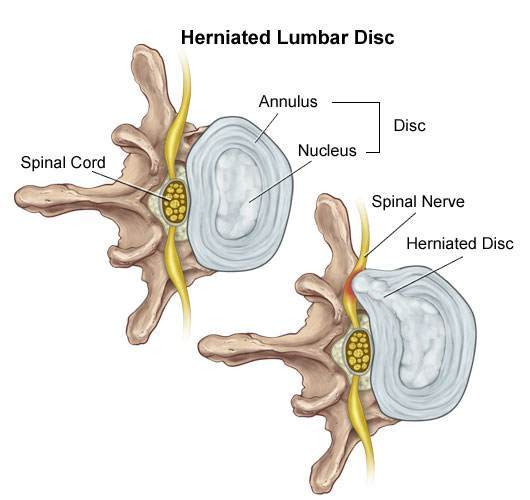
A herniated disc occurs when the disc’s nucleus breaks through the annulus, as shown in the illustration from neurosciences.beaumont.edu. But what triggers this displacement? The primary culprit is forward bending, which compresses the disc (think of it as a jelly-filled doughnut) and can lead to the annulus fracturing, allowing the nucleus to protrude and press against nerves.
Why Does it Hurt?
The disc’s exterior is tough cartilage, while its interior is softer, akin to mucus. Applying pressure on one side forces the inner material to the opposite side, similar to squeezing a doughnut. When a herniated disc or inflammation puts pressure on a nerve, pain ensues. The key to relief is applying counterpressure to reposition the disc.
For a deeper dive into herniated discs, refer to “Disc Herniation Part 1: Best Self-Treatments for Lumbar Disc Herniation.“
How to Apply Counterpressure:
The strategy involves bending your spine backwards or into the extension to shift the disc away from the nerve.
Exercises to Reposition a Herniated Disc: Note of Caution:
Initially, these exercises might intensify your pain slightly. If pain significantly worsens or radiates further down your leg during these exercises, cease immediately and consult a professional.
Exercises for Lumbar Herniated Disc
#1 Prone Lying Lumbar Herniated Disc
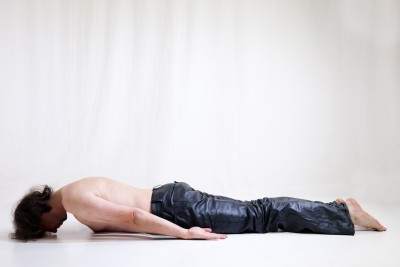
- Lie face down or prone in bed with your elbows tucked in under your side:
- As soon as you get up in the morning you should lie prone (face down). By getting in this position, your lower back becomes more arched, or as doctors say, you increase your lordosis.
- The increased lordosis pushes on the back of the disc helping to bring the nucleus forward into the correct position.
#2 Sphinx pose in Yoga For Lumbar Herniated Disc
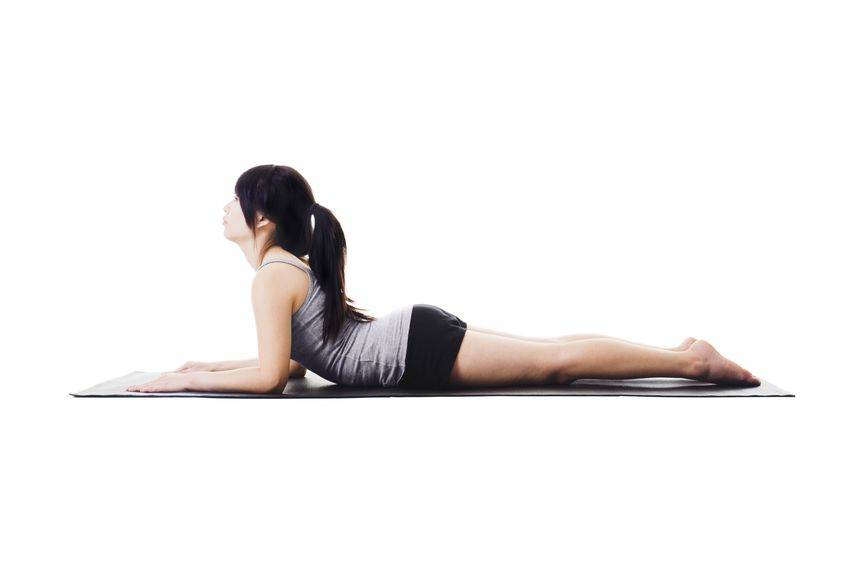
- Get into the prone position lying down on your stomach.
- Next, get on your elbows. If you have a hard time with this position go back into the prone lying position.
- Do these exercises hold each time for 1-2 seconds 6-8 times per set? This exercise can be repeated every two hours throughout the day.
Asses yourself. If the pain has decreased or the pain has moved away from the leg or thigh and into the hip or buttock, this is an improvement. Even if the pain is increased in the back but relieved in the leg this is an improvement and a green light that you should continue this exercise. You also get a green light if there is no difference at all.
- If your self-assessment gives you the green light, move on to the Cobra exercises just below.
- If your thigh or leg pain is worse, then stop right away.
- If your lower back, thighs and legs are the same you get a green light, so move on to the Cobra exercises.
#3 Cobras For Lumbar Herniated Disc
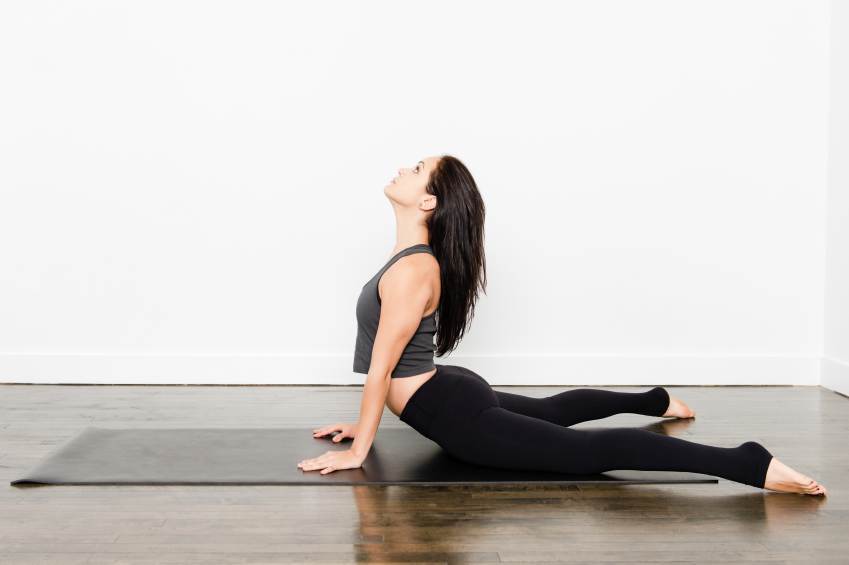
- Lie down face down with your hands underneath your shoulders.
- Push up from as high as you can until your lower back stops you or your elbows are straight.
- The pelvis should still be on the floor and the lower back muscles relaxed.
- Do these exercises hold each time for 1-2 seconds 6-8 times per set? This exercise can be repeated every two hours throughout the day.
Asses yourself. If the pain has decreased or the pain has moved away from the leg or thigh and into the hip or buttock, this is an improvement. Even if the pain is increased in the back but relieved in the leg this is an improvement and a green light that you should continue this exercise. If your thigh or leg pain is worse, then stop right away.
#4 Standing Extensions Lumbar Herniated Disc
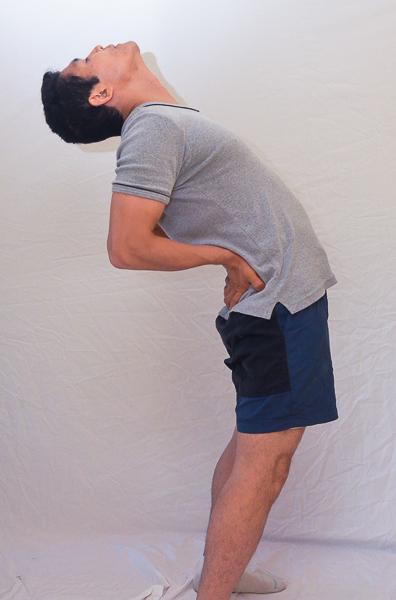
- Stand straight and put your hands behind your hips with your fingers facing down.
- Push your hands into your pelvis so that your lower back arches.
- Don’t use your lower back muscles
- These exercises can be done 6-8 times for 1-2 seconds. This exercise can be repeated every two hours throughout the day.
Stabilization Exercises: Prevent Your Disc From Coming Out By Having A Stable Spine.
#1 Cat-Camel or Cat-Camel For Herniated Disc
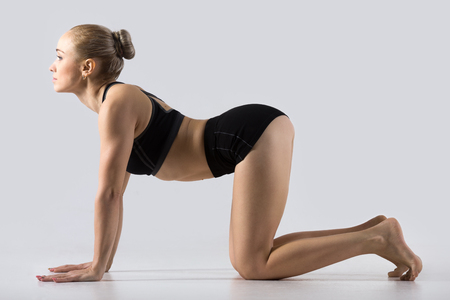
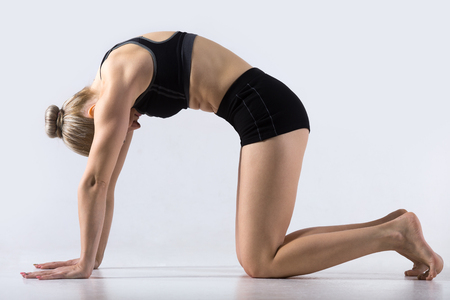
- On all fours with your knees under your hips and hands under your shoulders.
- Inhale and let your belly fall downwards toward the floor as you look up toward the ceiling for 2 seconds.
- Exhale and arch your back up as far as it will go or until you feel pain. You should not feel pain with this exercise, otherwise you are going too high.
- At the same time bend your neck forward and look toward your navel.
#2 Curl-Ups
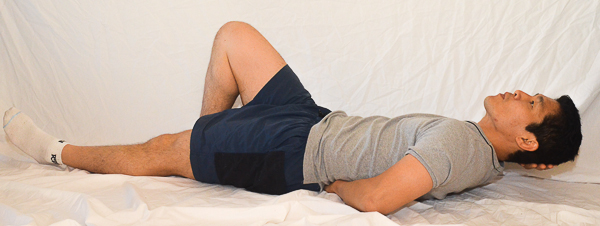
- To start, one foot is bent and the other is straight.
- One forearm goes under the arch of your lower back to support it.
- The other arm is supporting your head.
- Your head and neck come up as one block until your shoulder blades clear the floor.
- Do three sets of 5 working your way up to 10. If it’s easy, then hold for a couple of breaths.
#3 Squats
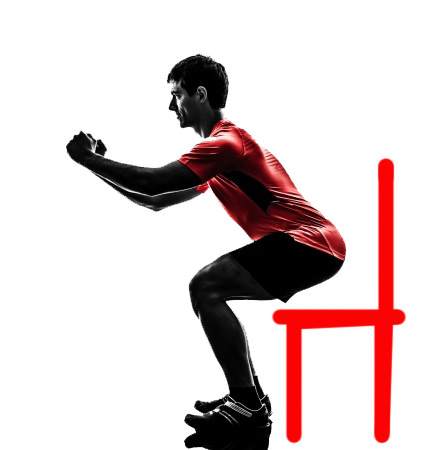
- Stand in front of a chair as if you are going to sit on it.
- Stand with your feet facing slightly more outward than your knee.
- Make sure your butt comes out, and keep lowering your butt until you touch the chair.
- Practice 3 sets of 10.
#4 Bird Dog
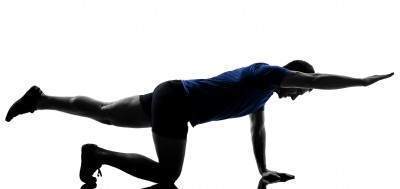
- Get into a crawling position with your hands and feet shoulder-width apart.
- Harden your core by contracting your abs and lower back. This is called bracing.
- Lift your arm first. If this is easy, then lift your leg only. If that is easy, then lift the opposite legs and arms, for example, right leg, and left arm.
- Want to make it tougher? Try lifting an arm and leg on the same side.
- 3 sets of 10. If you are shaking a little or cannot balance quite right, you’re doing the right exercise for you, i.e. lifting just the leg or arm might be easy, but lifting opposite arms and legs might put you off-balance a bit. Make sure you are stable before going to the advanced bird dog.
Tell us what you think in the comments below and like us on Facebook. This Toronto Downtown Chiropractor will answer all questions in the comments section. Let us know your vote for the best Toronto chiropractor in the comments section.
References
1. J Med Genet 2002;39:387-390 doi:10.1136/jmg.39.6.387


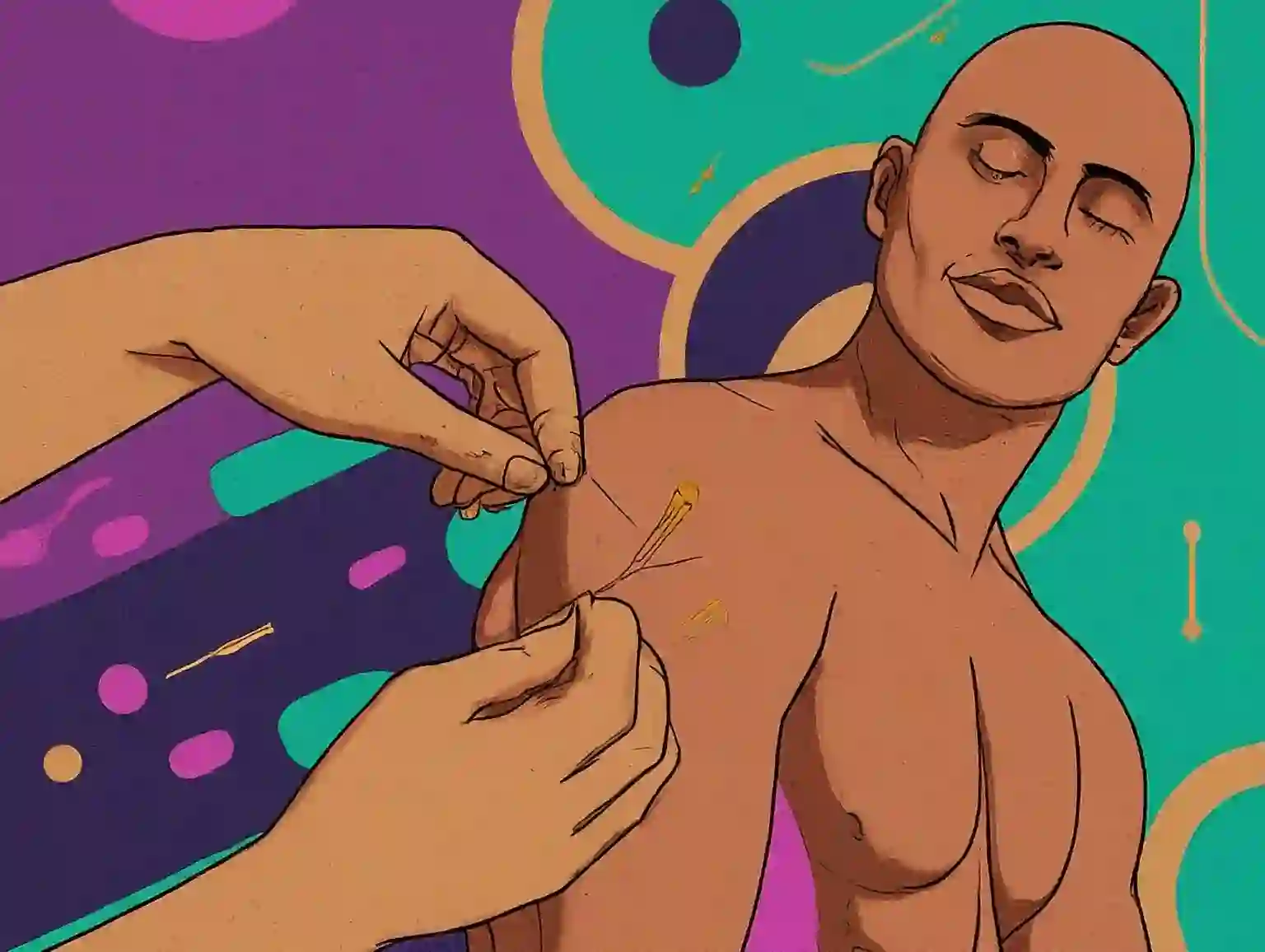
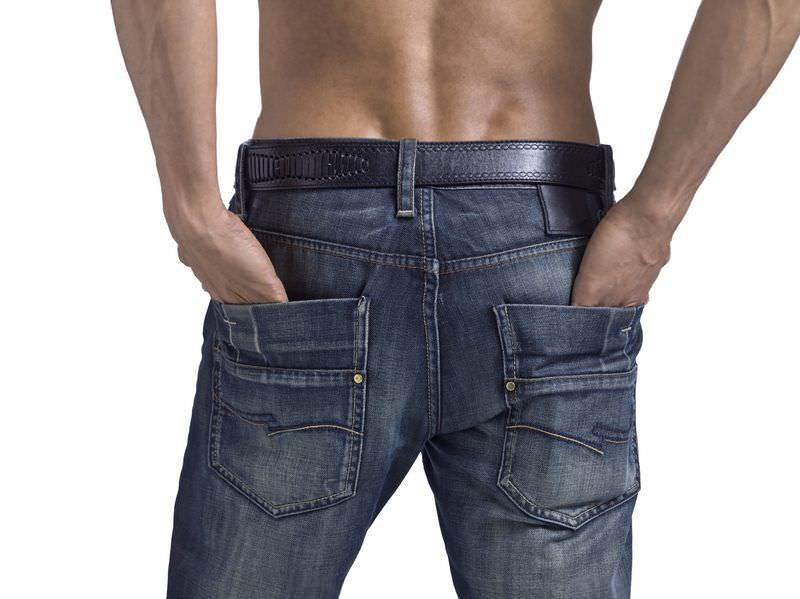
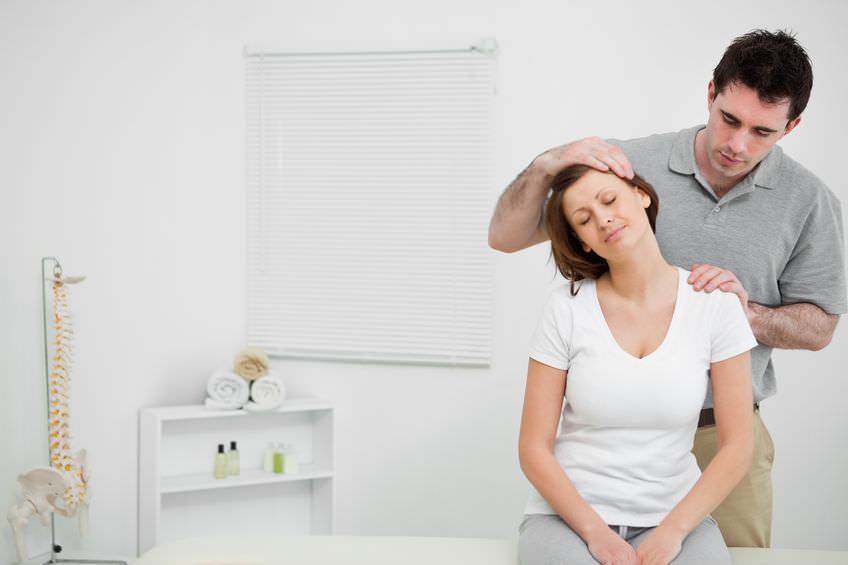
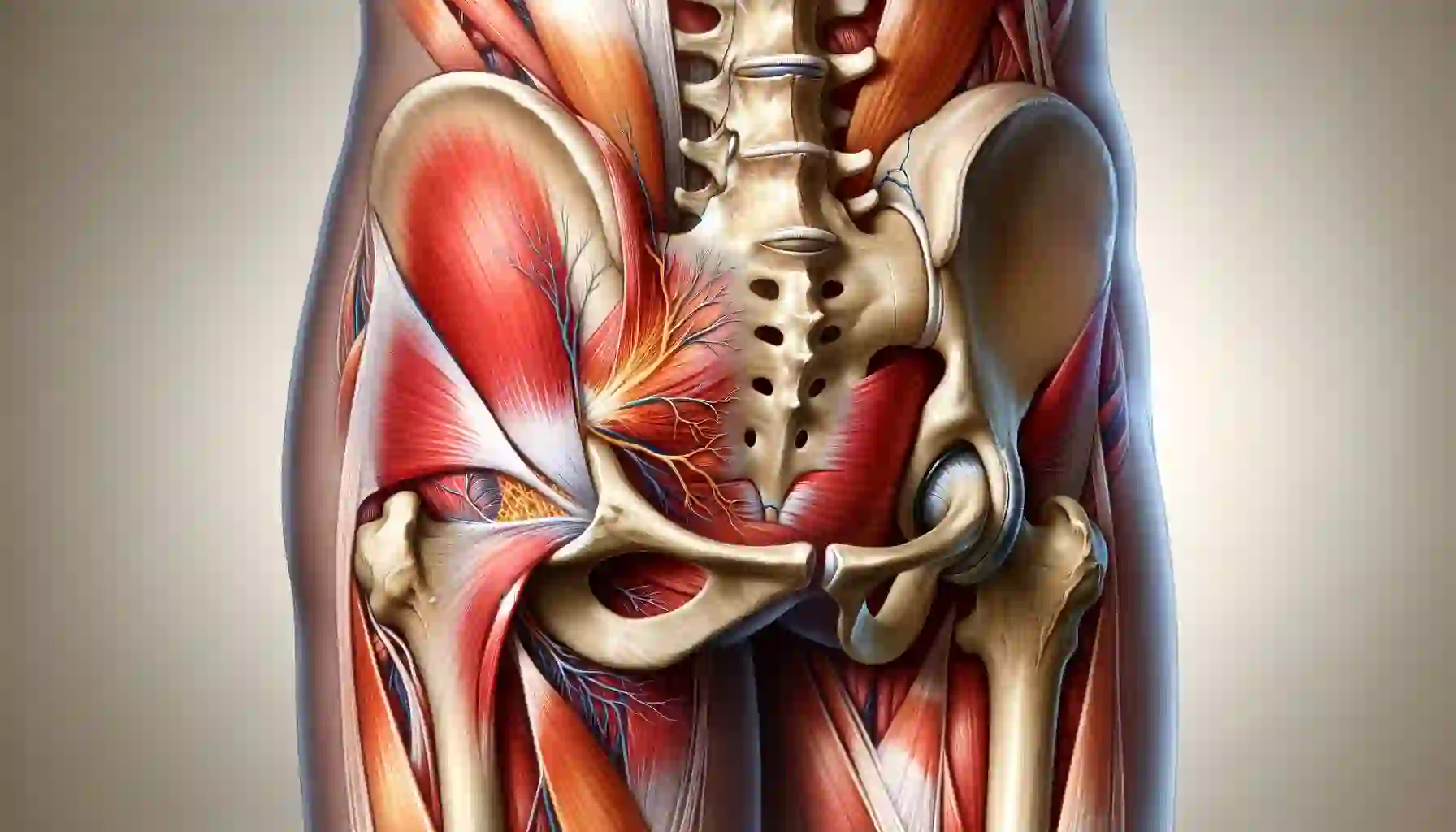
Hello Doctor, nice to see you that somebody is helping and serving people just for the sake of humanity.
I have some problems in my spine, the MRI report says:
-Mild Disc Prolapse at C4-5 C5-6
-Minimal posterior disc bulge at c4-5 level
Symptoms were like pain in back side of scalp, neck and upper shoulders and numbness in left hand.
I am doing exercises like chin tuck and yoga cobra but the pain is now moving in lower middle of back.
Please suggest that whether I need any other exercise or treatment and what are the precautions that I need to take in future.
Thanks in advance.
Author
Thanks for your question Rahul. Your discs are minimal and your symptoms don’t seem to correlate with your MRI. MRIs in general have no correlation to pain. However if the diagnosis is correct these exercises may help you. https://www.bodiempowerment.com/cervical-disc-herniation-best-exercises-help-sore-neck/
These exercises come with a warning. They may make you worse. I would work with a health care practitioner to make sure you are doing the right exercises at the right time. Otherwise you may get worse.
Hope that helps your cervical disc bulge.
Thank You Doctor
Author
You are welcome.
Thanks, Dr. Ken!
Author
You are welcome Quang.
Hi
I have a L4/L5 Post Lateral Disc Herniation. I’ve had back pain for 4 years now but within the last year and a half I’ve been in absolute pain. I get no relief from medication and my health in general has gone down hill. I’ve put on 2st in weight due to inactivity and my posture (due to the way I sit to get comfortable) is terrible.
I feel no one is helping me even though I have been to every kind of treatment possible. I am told I need a Microdiscectomy to remove part of the disc but I want to know if this is necessary, can I self heal???
I would love to share my MRI scan with you and hopefully your exercises would be suitable for me.
Author
Thanks for your question Alan. First you need to avoid aggravating yourself. https://www.bodiempowerment.com/disc-herniation-part-1/
Read this link and stop aggravating yourself.
No treatment will help if you keep making yourself worse. Also you need to the exercises in this post. Provided that the diagnosis is correct. Often times diagnosis by MRI is incorrect although I can’t tell in your case.
Hope that helps your possible disc herniation.
Hi Dr. Ken,
Hope that you are doing well. I just wanted to keep you updated my back problem and would like to ask you few more questions. My disk herniation has been significantly improved since December 2014 (after 3 months with severe pain). Currently, I can sit/stand/walk for several hours without pain. I think I am almost back to my normal life…I am also trying to do 3 exercises (cobra, cat-cow, and bird-dog) two times a day (in the morning and at night).
My question is that: are there any activities/exercises that I can do to maintain/improve my back? If yes, could you provide some suggestions? I am scared about back pain to death so I will do anything to avoid it.
Thank you.
Author
Thanks for your question Quang. Try adding these exercises. https://www.bodiempowerment.com/part-2-degenerative-disc-disease-exercises-help-lower-back-pain-spondylosis/
These recommendations are for educational purposes only.
Hope that helps your disc herniation.
Hi Dr. Ken,My MRI says that i have a disc protrusion on L1-L2 and L2-L3,What exercises can i do to normalized my disc or to reduce my back pain? thank you!
Author
Thanks for your question Ruel. Just try the exercises from this article. Keep in mind just because your MRI says you have a disc herniation doesn’t mean that is the problem. If it is the problem these exercises will likely help you.
If the exercises give you pain or make your symptoms go further down the leg like giving you numbness, tingling or pain further down into the buttock or further down the leg than you should stop the exericses.
Hope that helps your possible disc hernaition.
Thanks Dr Ken! I think you’re right the pain has been going on for so long and getting worse but doctors keep telling me they can’t find anything causing it, which I find very distressing, but yeah I’m going to put my time in the nicer things in life instead of worrying over this. Thanks for all the advice you have given me, this website is the best I have come across. Thanks again!
Author
You are welcome Pauline
Hi sorry for not explaining properly, I meant on the leg. Thanks!!
Author
Thanks for your question Pauline. Your disc can cause pain in any of those areas as not everyone is the same. Some people have their heart on the right side not the “normal” left. Some people have nerves that go from their L45 disc that is more in the pattern of L23. This is not “normal” but it there are what we call normal variants.
The disc on MRI is not causing you pressure. It maybe causing pressure but it might not be causing pain.
Try the exercises and see if it helps. Try not look at so many websites as I think it is giving you conflicting information and confusing you. Stick with whatever site you think is most reliable and stick with that. Better yet talk to someone in person.
Hope that helps your possible disc herniation. (We don’t know it’s causing your pain).
Hi Dr Ken first I would like to Thankyou for answering all my previous questions and helping me understand all about disc hernations. Here’s my last question as I stated in previous questions I have a small central bulge l4/l5 which on MRI when lieing down shows it does not touch any nerves, however if it does when standing with it being central could it cause symptoms in l3,l4,l5 and s1 areas? Or would it likely have to be other discs involved to cause smytoms in those areas? Thanks.
Author
Thanks for your question Pauline. If you mean those areas of the spine just above and below yes a small bulge can cause that as it will irritate the muscles. Other disc can be involved but not likely.
I think you need to concentrate on getting better and not keep going to a myraid of websites and second guessing yourself.
Hope that helps.
Hi Dr
I’m a 35 year old female diagnosed with DDD, ive had 2 surgeries, 5 and 4 years ago,one on my neck and one lower back. Apparently my disks started acting up at the age of 12. I’ve never had an injury, car accident or anything. I do experience the “normal” day to day uncomfortable feeling in my back; etc but overall I’m fine. My question…can I go bungee jump
Author
Thanks for your question Rene. As long as the bungee rope holds you can go bungee jumping. Seriously though if you are in acute pain or have trouble moving I wouldn’t suggest it.
The way to determine for sure is by going to a chiropractor or physiotherapist and getting on a traction machine. This pulls your spine if you have rebound pain then don’t go bungee jumping as that’s what it’s going to do to your spine.
Hope that helps your herniated disc question.
Hi Dr.
My wife diagnosed to “posterior central herniation of c5-c6 inter vertebral disc with per-discal osteophyte formation…” in MRI report. She is having pain from behind the right shoulder running up to right eye with swelling also. Please advise the treatment along with exercise etc. We would be grateful.
Regards
Author
Thanks for your question. Assuming that the disc herniation is giving her the pain, this should really be taken care of and be advised by someone who can examine you.
Most of the exercises will likely aggravate her.
Hope that helps her cervical herniated disc.
am suffering from Disc herniation at Lumbar 4/5 with bilateral neural foraminal stenosis. Moreover, disc bulge at L5/S1. Due to disc herniation I have lumbar stenosis. I have bilateral claudication of the sole of feet when I merely walk 200 steps.
MRI SAYS I HAVE BONE SPURS TOO. WHAT EXERCISES I CAN PERFORM AND WHAT WOULD BE THE OUTCOME OF EXCERCISES.
Author
Thanks for your question Salman.
Try these exercises. https://www.bodiempowerment.com/spinal-stenosis-comprehensive-guide-5-exercises-spinal-stenosis-lateral-stenosis/
If the exercises increases the pain or increase symptoms down the leg then you should stop the exercises.
Hope that helps your stenosis. This is for educational purposes only.
Hi Dr Ken,
Finished my MRI and this was the radio grapher report:
L3-L4: Disc height and signal are reduced. A disc bulge is seen indenting the thecal sac. No neuroforaminal narrowing seen.
L4-L5: Disc height and signal are reduced. A disc herniationwith right foraminal propensity is seen indenting the thecal sac. Disc abuts bilateral traversing and right exiting nerve roots.
I can still manage walking, climbing stairs, standing and sitting but feel my hips, thighs and knees kind of tingilng and weak sensation. But there is still strength in the legs as today i walked up 3 flights of stairs.
There is pain that comes on and off in the hips and thighs. But generally feel that my back and legs muscles are tight and kind of cramp sensation.
From the radio grapher report, are you able to interpret the severity of my condition?
Author
Thanks for your question Yang. Assuming that the doctor did a good job taking a history and it correlates with the MRI than the MRI can be taken a face value. Many times MRI will show disc herniations for people with no pain so you have to be careful. There are people with MRI that are far worse with no pain.
In your case it is significant but you should eventually get better with conservative therapy. Try the exercises here in this article. If the exercises increases the pain or increase symptoms down the leg then you should stop the exercises.
Hope that helps your disc herniation. For educational purposes only.
Daktari Ken, today I just want to say a BIG thank you to you for the invaluable advise, support and free info on this site. I have greatly benefited from all these: avoided surgery, reduced pain significantly and continuing to improve. God bless you and your work. (Ps Daktari is Kiswahili word meaning Doctor)
Author
You are welcome Steve.
Hi Dr Ken i woundering of your professional opinion on this artical I found stating that pain in the front and side of the leg is usually something eles other then nerve root entrapment. Here it is………Because people sometimes think they have sciatica, when actually, what they have are painful muscle spasms in the buttock, thigh, calves, or elsewhere — a different condition — I’m going to teach you to distinguish sciatica from muscle pain.
The typical sciatica sufferer has radiating pain that starts at the buttock (usually one side, only) and that may extend down the back of the thigh as far as the foot. Sensations may include numbness, burning, or the feeling of a hot cable (or poker) going down the buttock or back of the leg. Back pain often precedes and accompanies sciatica.
If you have pain going down the front of your leg, you probably have muscle spasms of the quadriceps muscles; if down the side, it’s probably contracted muscles that attach to the ilio-tibial (IT) band. Less common is entrapment of nerve roots other than those of the sciatic nerve — but that’s not sciatica.
Is it quite uncommon for front and side thigh pain to be nerve related? Plus can a l4/l5 centre bulge cause pain and muscle spasm in this area? Thanks in-advance.
Author
Thanks for your comment Pauline. “Sciatica” is pain only along the sciatic nerve, which is formed from the nerves L4, L5, S1, S2, S3. In some people it can be higher up than other so the L3 or L2 or even higher can be involved as human beings are not identical but variable. You can feel tingling, numbness or pain but also tight muscles along the path of the sciatic nerve or it’s branches. I do find that it’s not uncommon to find nerve pain along the sides and but not the front. However I wouldn’t call it sciatica. I will usually find the source and by doing a neurological exam. Often the pain usually attributed to one of nerves pointed out above. As the pinching of the nerve is higher up in the spine I don’t call it sciatica.
Sciatica is not a diagnosis it just means pain along the sciatic nerve. When making a diagnosis I don’t use the term. That’s just not a best practice as far as I am concerned.
Hope that helps.
Dear
Dr Ken,
Thanks for the reply. I will stop the exercises. I am out of bed rest and I am going to my office for half days or so ,also I am moving around a bit when back home. But still there is stiffness in the lower back as well as pain while bending forward. the orthopedic Doctor here has examined me and asked me to resume work. Please advice me as to what should I do to get better. Thanks and obliged.
BEST REGARDS.
VIKRANT.
Author
Thanks for your question Vikrant. First your doctor should be advising you as your orthopedic surgeon examined you. If he gave you medication you should keep taking the medication and stay away from the exercises for the time being.
Hope that helps.
Hello Dr Ken again!!
I had gone for spine analysis and the Dr there also suggested me the exercises same as yours along with lot of other exercises. Please suggest as you had asked me not to do your exercises. The superman is also one of the exercise. Do you think that patient with HLA B27
positive should not do any exercises even though he does not have any of the symptoms. Please reply. Thanking you in advance.
BEST REGARDS
VIKRANT
Author
Thanks for your question. As there is an inflammatory component to your pain, you can make yourself worse with exercises for now. At the same time you keep wanting to do the exercises which already recommended you stop. My opinion hasn’t changed.
Hope that helps.
Awww thanks again for answering my questions.
Author
You are welcome.
Hi dr. Ken- I’m so glad I came across this site. I have a re-herniated disc. Had a disectomy in October and since then it has reherniated (MRI and similar symptoms confirm diagnosis). The disc is lower left. I have pain all the way down my leg, very extreme at times. I have a 1 year old daughter and want to avoid another surgery as much as possible. I have seen an orthopedic and a neurosurgeon. Going back next week to discuss options. Can the exercises you suggested help my disc even if the bulge is greater than 8mm? Thanks in advance!
Author
Thanks for your question Christina. The exercises here are likely to aggravate you as they will pinch the disc and cause it to push further out into the spinal canal or push on the nerve.
Here are some exercises that may help you. Be warned though that they may make you worse. Your disc is sticking out substantially so almost any position can make you worse.
https://www.bodiempowerment.com/part-2-degenerative-disc-disease-exercises-help-lower-back-pain-spondylosis/
Hope that helps your herniated disc.
Hi Dr. Ken.
I have posted here before on my problem, but so far I have not found relief. I have a dull burning feeling in and around my si joints. It seems to occur occasionally when I plant my feet to turn or when I play basketball and try to cut laterally. 2 years ago I rolled my ankle really badly and my foot strike does not feel the same. My ankle is still a work is progress.
I have a couple other symptoms I wanted your opinion on. I get a pins and needles feeling on the outside of my right thigh and top of thigh if I sit Indian style or stand still for 5-10 minutes. It seems to be triggered by hip position as it occurs when sitting Indian stile with my leg folded out. Lately, I have a very faint pins and needles feeling in my right big toe that occurs with physical activity. Besides the dull si joint aching, I have muscle fasculations in both legs.
I am essentially terrified that I have a serious back issue but I have never had any sort of back pain. I can play basketball, lift weights, etc and never had any sort of sharp back pain or pain that immediately appeared after physical activity. I do have some mild burning in my lateral glute/hip areaThe nerve sensations I get seem to follow the femoral nerves. I am hoping I just have some out of whack bio mechanical issues that is causing this. I really hope I don’t have any sort of spinal / disc issue. I have had two X-rays and a physical examination done my an ortho surgeon. They came back normal. I am sort of at the end my rope mentally over this. The biggest thing is I don’t know exactly what’s causing it but it seems to have to do with hip position/rotation but I didn’t think I would get nerve symptoms from that.
Dr. Ken, sorry for the long post but what is your opinion? Does this sound more like a bio mechanical issue or a spinal injury? Would you recommend I go see an ortho or neurologist?
Author
Sounds like you have nerve issues. It can be L2 L3 or L4 depending on the person as most people are not text books. Also it can be the lateral femoral cutaneous nerve.
I would see a neurologist who can properly examine you.
Hope that helps.
Thank you Dr Ken. Would you suggest trying any of your exercises until I can see a neuro?
Is it common to have nerve symptoms but no back pain whatsoever?
Author
Thanks for your question Will. I haven’t examined you but if it is related to a posterior disc herniation vs a lateral or anterior disc herniation the exercises may help. However if the exercises give you more pain, twitching, tingling etc… or especially goes further down the leg you should stop.
Also another possibility is that you your initial tinging that sounds like a nerve problem was actually that start of a burning sensation that you initially posted. In that case a flat foot will cause internal of the leg causing pain in the hip and in the SI area which is very common with a flat foot.
If the exercises don’t help or make you worse in the hip and lateral thigh are than this is a good possibility.
Like I said I haven’t examined so I can’t tell for sure.
Hope that helps.
Thanks for answering all my questions! I just have one more! I asked my doctors office for a report of my MRI, I got the report and it says it’s comparing this mri to the one I had last year as my symptoms are getting worse. Here it goes. For the purpose of this report I am assuming the lowest substantial disc space is at L5/S1, there has been no significant interval change…. What does this mean? Is there somthing up with my l5/s1? It also say there is a small central disc bulge at l4/l5 but there is no central or foraminal compression at any level… Does this mean my bulge is in the middle of my disc and could possabley be the reason I’m getting symptoms down both legs? I no it say it’s not touching but like you said this mri has been done when I’m lying down. Thanks again for taking the time to answer my questions.
Author
Thanks for your question Pauline. No significant interval change means that it hasn’t changed that much over a period of time. In your case the interval is a year. Also the central disc can cause pain down both legs if you are bending over or lifting. Not likely while you are standing for short periods but possible with prolonged standing and more likely with prolonged sitting.
Keep in mind discs from MRI’s don’t always cause pain. Just to confuse things.
Hope that helps your understanding of herniated discs.